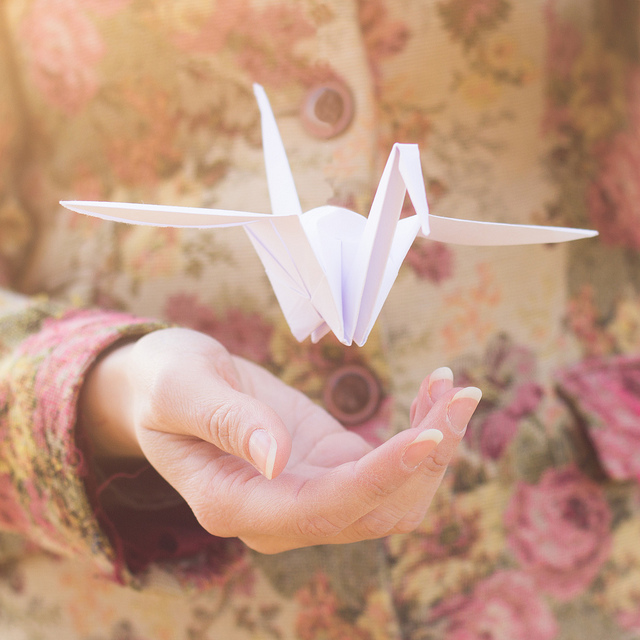My past few weeks have been extremely hectic.
I’ve been juggling a bunch of fun, but energy and time-consuming things in my life.
I’ve been riding my bike around the city to teach yoga at various locations, visiting friends in the UK, taking my scout group out for an excursion, doing odd shifts at a café, getting to know a new special someone, participating in poetry slams and open mic sessions, and on top of all this—just generally dealing with life.
I love doing all of the above, but it has been taking its toll. I feel that some days I have given too much of myself and not given enough time for myself. Now, after a long time, I have taken the time for myself to reconnect and reflect on where I am right now. What’s my purpose?
What came to me during my reflection time, is the lesson taught to me by a great yoga teacher, Marla Meenakshi Joy, whose class I was honoured to attend last autumn. She talked about the importance of three steps that allow us to evolve, fulfil our purpose and connect with our higher self —even when life seems overwhelming.
These simple steps are: engaging in a practice or discipline; studying oneself and letting go of the outcome of that practice by surrendering to the Source/God/Oneness/the Universe/Love. Preferably practiced several times a day. The source of these teachings are in Yoga Sutra of Patanjali.
To quote the original text: tapah svadhyaya ishvara-pranidhana kriya-yogah, which translates to: “Yoga in the form of action has three parts.” These parts are:
1. Training and purifying the senses (tapas)
2. Self-study in the context of teachings (svadhyaya)
3. devotion and letting go into the creative source from which we emerged (ishvara pranidhana)
Here are guidelines how to embrace these three simple steps toward a happier, more peaceful and joyful existence—even in hectic times.
Step One: Tapas—Do the Practice
Take time to do your practice, whatever it might be. It might not be an asana practice, it might not be a seated meditation. Maybe you play piano, rock climb, paint, or write short stories? Your practice might be just being kind to people.
Whatever it is, get in to the zone, be disciplined, get to that flow state; create, practice and express yourself to the best of your abilities. Why? For me the motivation is the evolution of the individual for the greater good of the whole.
Do your practice for the sake of practice. Be an inspiration, be the most magnificent, radiant expression of reality you can imagine. In short: do the work, with devotion. In busy times it might seem impossible to set a side a whole hour or two for your ideal practice.
Then take five minutes to your practice. If it is writing, write just a few sentences. If you practice yoga, take time for just a few sun salutations. Do your best to be disciplined, maintain a daily connection to your practice and remember, the most essential practice of all is to smile.
Step Two: Svadhyaya—Study Yourself
Now, look at the fruits of your practice. Don’t judge, just take a few moments to look at the reality as it presents itself. Study yourself without judgement. Look at the manifestation of creation—you in relationship with everything else.
What’s your response to it? How do you feel about yourself right now—after doing your best with your daily practice? Try to figure out what are the root causes for the state of your mind and body right now. Reflect on it, be honest about it and, crucially, don’t get attached to any given outcome.
Some days we might paint a gorgeous image, whereas the other days we only make a mess. Sometimes a strong, solid handstand just happens by itself, other days even thinking about being upside down makes you feel horrified. Try to sincerely use your practice as a mirror. Be true to the law of cause and effect that has brought about the present state of affairs.
Why today I succeeded in my endeavours? What are the variables that made me feel less than 100% in my practice?
Reading some texts by great teachers, or a scientific journal, may help you understand the kind of being you are and the kind of elements are at play in your efforts to evolve. Take time to understand yourself and your patterns. This step is crucial to remember—even when we are busy.
This might mean a few minutes of just being and feeling in savasana after your asana practice. Alternatively, if your practice is to stay calm and be kind to people and you feel like someone’s behaviour is prompting you to react aggressively, take just a few minutes to breathe calmly and observe the emotions rising in and out of your awareness. Mindfulness meditation is an exemplary method of self-study to incorporate in any practice. Allow your emotions to rise, feel them and look at them without identifying with them and move on to step three.
Step Three: Ishvara Pranidhana—Let Go
Finally, instead of judging yourself—being upset for the apparent “failure”, or getting too cocky for succeeding or even exceeding expectations—just let go. You have done the practice, you have taken some time to reflect on the present moment without judgement. Now it’s time for you to let go of the practice. Perhaps after honestly reflecting you have come to a conclusion that for the benefit of your evolution you need to modify your behavioural patterns.
Now you are perfectly equipped to do just that.
You can decide, resolutely, to take action without clinging on to the past or being anxious about the future. You can commit to conscious evolution through establishing a harmonious relationship with everything there is. Maybe you need to commit to getting bed earlier if tiredness was the cause of your “semi-okay performance.”
Or perhaps you need to learn how to say “no” so that you have more time for the truly meaningful things in your life.
Whatever it is, now you know what needs to be done. With that in mind, fully surrender yourself to God/the Universe/Love/Source/Light/Life and allow the next “now” moment to unfold itself as it comes, knowing that you have done your best and with loving compassion and equanimity learnt the lessons that were due.
To sum up by quoting my own poetry:
…just be true to yourself,
and always be your best,
the rest it’s already taken care of.
Author: Benita Auterinen
Editor: Sara Kärpänen
Photo: Gret B / Flickr







Read 1 comment and reply